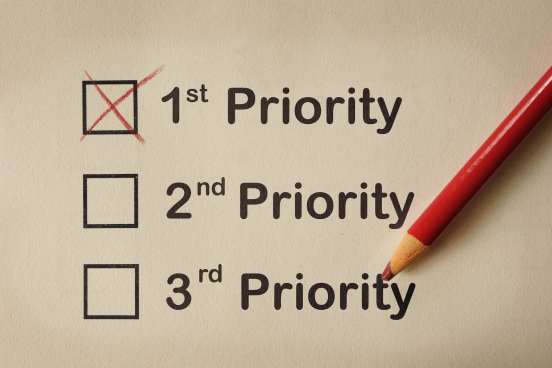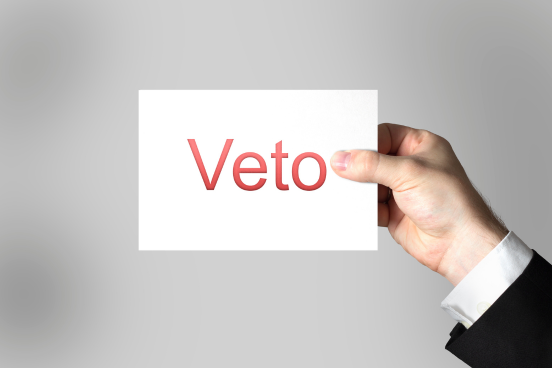Practical tools for turning discussion into decisions
Getting a group to actually make a decision is harder than it looks. You’ve probably sat through meetings where discussion circles endlessly, a few loud voices dominate, or the team defaults to whatever the senior person suggests just to move on. The problem isn’t that people don’t care. It’s that most teams lack structured methods for turning discussion into decisions.
As a facilitator, your job is to guide groups through this process efficiently while ensuring everyone’s input gets considered. These decision-making techniques give you practical tools for different situations, organized by the type of decision challenge you’re facing.
Quick Consensus Checks for Rapid Group Alignment
Sometimes you need to gauge support fast. These group decision-making methods give you instant visibility into where the team stands.
Roman Voting

Roman voting gives you a clear visual read of group sentiment using three hand signals. Thumbs up means yes or approval. Thumbs to the side means neutral or unsure. Thumbs down means no or strong disagreement.
Use this when you need to gauge support for a specific proposal before moving forward. It’s faster than going around the room for verbal responses and forces everyone to take a visible position simultaneously, which reduces the anchoring effect of early opinions.
The key advantage is speed and clarity. Within seconds, you know if you have consensus, mixed feelings, or serious opposition. If you see a sea of thumbs up with one or two sideways, you can quickly address those specific concerns rather than rehashing the entire proposal.
Prioritization Methods for Narrowing Multiple Options
When you’re facing a long list and need to narrow down quickly, these facilitation methods help surface what matters most to the group.
Dot Voting

Dot voting works when you need to narrow down a large set of options quickly. Give each participant a limited number of votes (typically three to five dots or marks) and let them distribute these across the options however they want. They can stack multiple votes on one option or spread them out.
This method surfaces group preferences fast. You’ll see clusters form around popular choices within minutes, making it obvious which ideas have traction. It works particularly well for prioritizing features, selecting workshop topics, or shortlisting solutions from a brainstorming session.
The limitation is that dot voting shows you what’s popular, not necessarily what’s best. It also doesn’t capture why people made their choices or what concerns they have about other options.
Multi-Voting

Multi-voting is essentially dot voting done in rounds. Start with a large list of options. Give participants a specific number of votes and have them distribute them. Remove the options with the fewest votes. Repeat the process with fewer votes per person until you’ve narrowed down to a manageable number of finalists.
The iterative approach helps when the initial option set is overwhelming. Each round forces the group to reconsider and refine their thinking. People often vote differently in later rounds as they see which options are gaining traction and think more carefully about tradeoffs.
This works particularly well for roadmap prioritization or budget allocation decisions where you need to get from dozens of possibilities down to three to five focus areas.
Measuring Depth of Support in Group Decisions
These techniques help you see not just what people think, but how strongly they feel about it and whether they’ll actively support implementation.
Fist of Five

Fist of five adds nuance to simple yes/no voting. Participants hold up fingers to indicate their level of support on a scale from zero to five. A closed fist means strong opposition. One finger indicates serious reservations. Two or three fingers signal some concerns but willingness to support. Four or five fingers show strong agreement.
This facilitation technique reveals not just the decision but the commitment level behind it. Seeing that most people are at three fingers tells you the decision has tepid support and might face implementation challenges later. A room full of fours and fives suggests the team will execute enthusiastically.
When you spot low numbers, ask those people to explain their concerns. Often you’ll uncover risks or practical issues the group hasn’t considered. Sometimes a small modification to the proposal can move skeptics from two fingers to four.
Gradients of Agreement
Gradients of Agreement provides seven levels of support, giving participants more precise options than Fist of Five. The scale typically looks like this:
- Wholehearted endorsement
- Agreement with minor reservations
- Support with reservations
- Abstain (lack information or neutral)
- More discussion needed
- Serious disagreement but willing to go along
- Veto or block
This method works best for consequential decisions where you need to understand not just what people think, but how strongly they feel and whether they’ll actively support implementation.
The detailed feedback helps facilitators identify where the resistance sits. If most people are in the middle ranges, you likely need more discussion or information. If you have a few people at the veto level, you need to understand their concerns before proceeding, or you risk sabotage during execution.
Structured Comparison Techniques for Complex Choices
When you have several viable options and need to determine which one truly has the strongest support, these structured comparison methods help.
Ranked Choice Voting

Ranked choice voting asks participants to order their preferences rather than just picking favorites. Each person ranks the options from first choice to last choice. You then use those rankings to determine a winner through successive elimination rounds, redistributing votes from eliminated options to each voter’s next preference.
This method prevents situations where a polarizing option with a passionate minority wins over broadly acceptable alternatives. It also reduces strategic voting since people can honestly rank their true first choice without worrying it will cause their acceptable second choice to lose.
The tradeoff is complexity. Tallying results takes longer, and explaining the process to people unfamiliar with it requires time. Use this for high-stakes decisions with multiple viable options where you need to ensure the outcome reflects genuine group preference, not just whoever has the most vocal advocates.
Pairwise Comparison

Pairwise comparison forces explicit tradeoffs by having the group evaluate options two at a time. For each pair, participants vote on which option they prefer. The option that wins more head-to-head matchups emerges as the group choice.
This technique shines when dealing with complex decisions where comparing multiple options simultaneously gets overwhelming. Breaking it down into binary choices makes evaluation clearer. It also surfaces interesting dynamics, like when option A beats B, B beats C, but C beats A, revealing that no option truly dominates.
The method becomes time-consuming with many options since you need to evaluate every possible pair. For six options, that’s 15 comparisons. For ten options, it’s 45 comparisons. Use this when you have three to six well-defined alternatives and the decision matters enough to warrant thorough analysis.
Risk Mitigation Through Veto Mechanisms
Sometimes the group needs a mechanism to surface deal-breakers that might otherwise get overlooked in the push toward consensus.
Veto Cards

Veto cards give each participant one or two cards they can play throughout a session to block a decision they fundamentally cannot support. Once played, the card is gone for that meeting or project phase.
This method acknowledges that consensus doesn’t mean everyone loves every decision. Sometimes people can live with outcomes they don’t prefer. But it also recognizes that occasionally someone sees a critical flaw or deal-breaker the rest of the group is missing.
The limited number of vetoes prevents overuse. People save their cards for issues that truly matter to them rather than blocking everything they slightly disagree with. When someone plays a veto card, it signals to the group that this person sees a serious problem worth understanding.
After someone plays a veto, give them space to explain their reasoning. Often they’ll identify risks, ethical concerns, or practical barriers that warrant further discussion. Sometimes the issue can be resolved with modifications. Other times it reveals that more exploration is needed before deciding.
Selecting the Right Decision-Making Technique
The organizing structure above gives you a starting framework, but the real skill is matching technique to context. A quick product prioritization session might start with dot voting to surface favorites, then use fist of five to check commitment levels before finalizing. A strategic direction decision might warrant ranked choice voting to evaluate alternatives, followed by Gradients of Agreement to understand implementation support.
The common thread across all these facilitation techniques is structure. They prevent the loudest voices from dominating and ensure everyone participates in the decision. They make the invisible visible, turning vague sentiment into concrete data you can work with.
The best facilitators don’t just pick a technique randomly. They consider the decision’s importance, the number of options, the team’s familiarity with different methods, and how much time is available. They also stay flexible, sometimes combining techniques or switching approaches mid-session if one method isn’t producing useful results. Many facilitators pair these decision-making methods with structured techniques for opening discussions to ensure quality input before the decision phase begins.
Mastering these decision-making tools won’t make disagreements disappear or turn every choice into an easy one. But they will help you guide groups toward decisions more efficiently while building buy-in for whatever path the team chooses.
Practice Advanced Facilitation Techniques
These nine techniques provide practical starting points for better group decisions. If you want to deepen your facilitation skills and learn frameworks for optimizing team decision-making, conflict resolution, and team dynamics, check out our Building High-Performing Teams Workshop or the Advanced Certified Scrum Master Class, where you’ll practice these methods and more in real team scenarios.